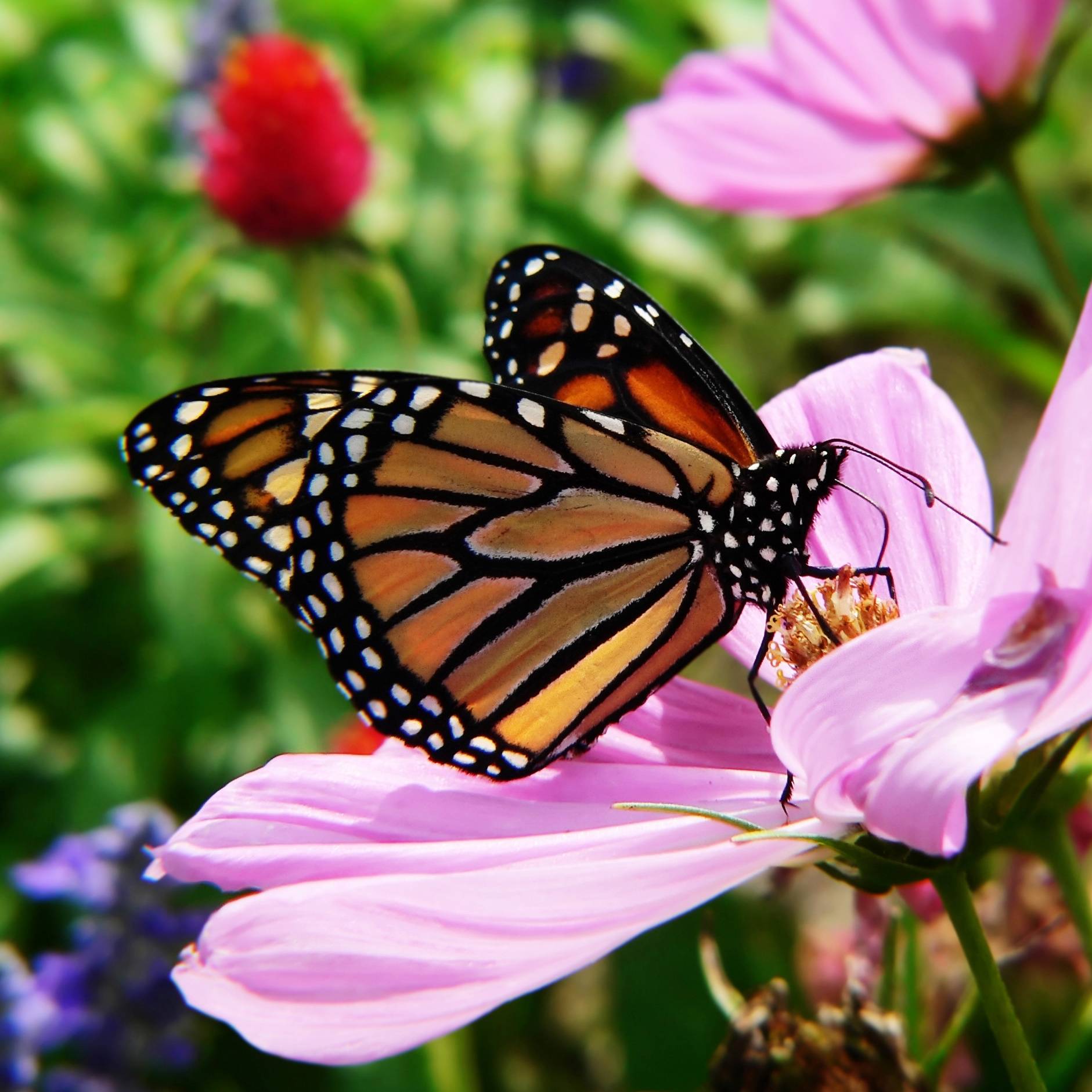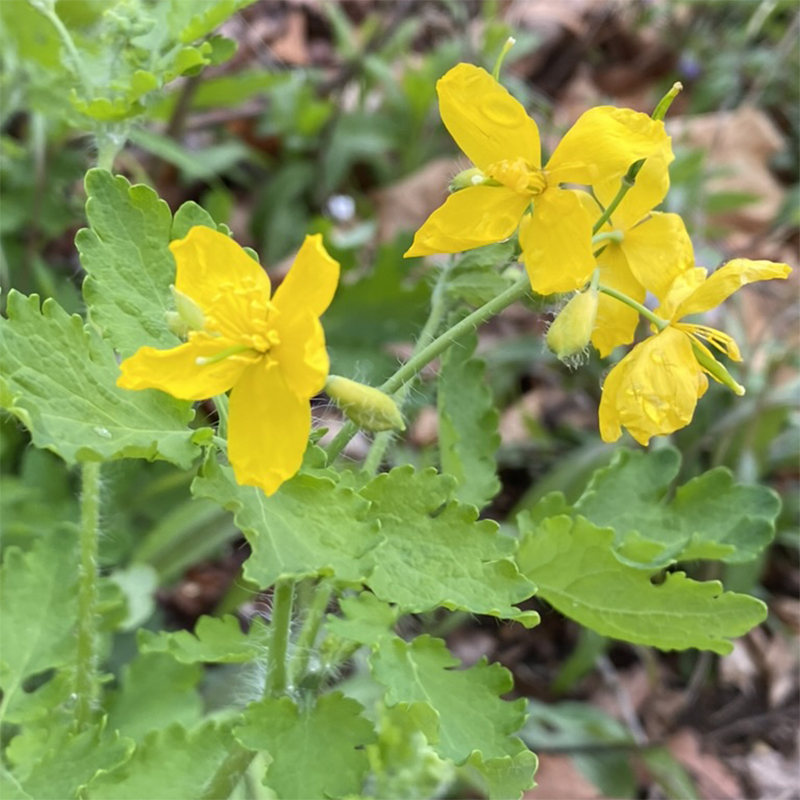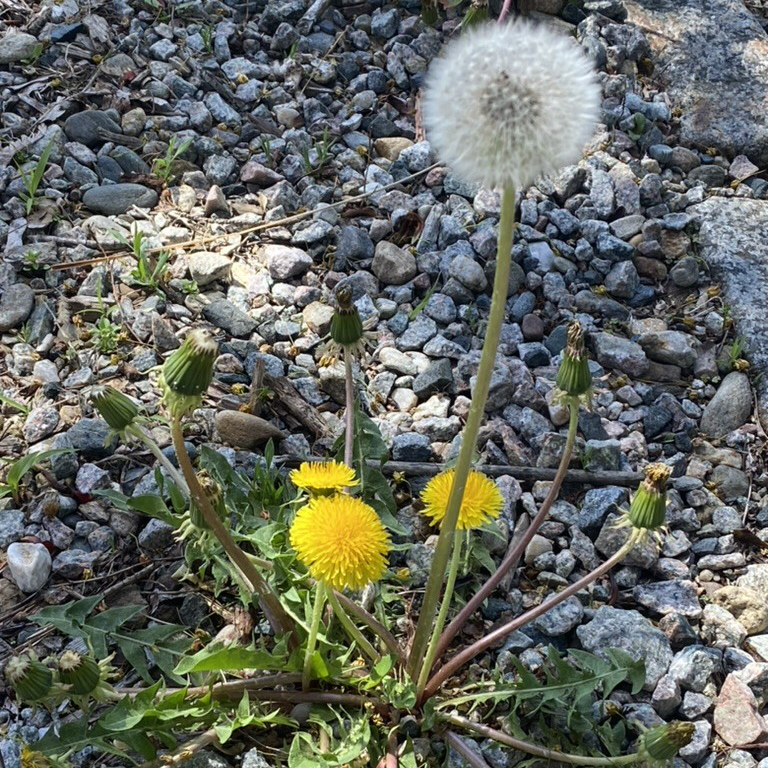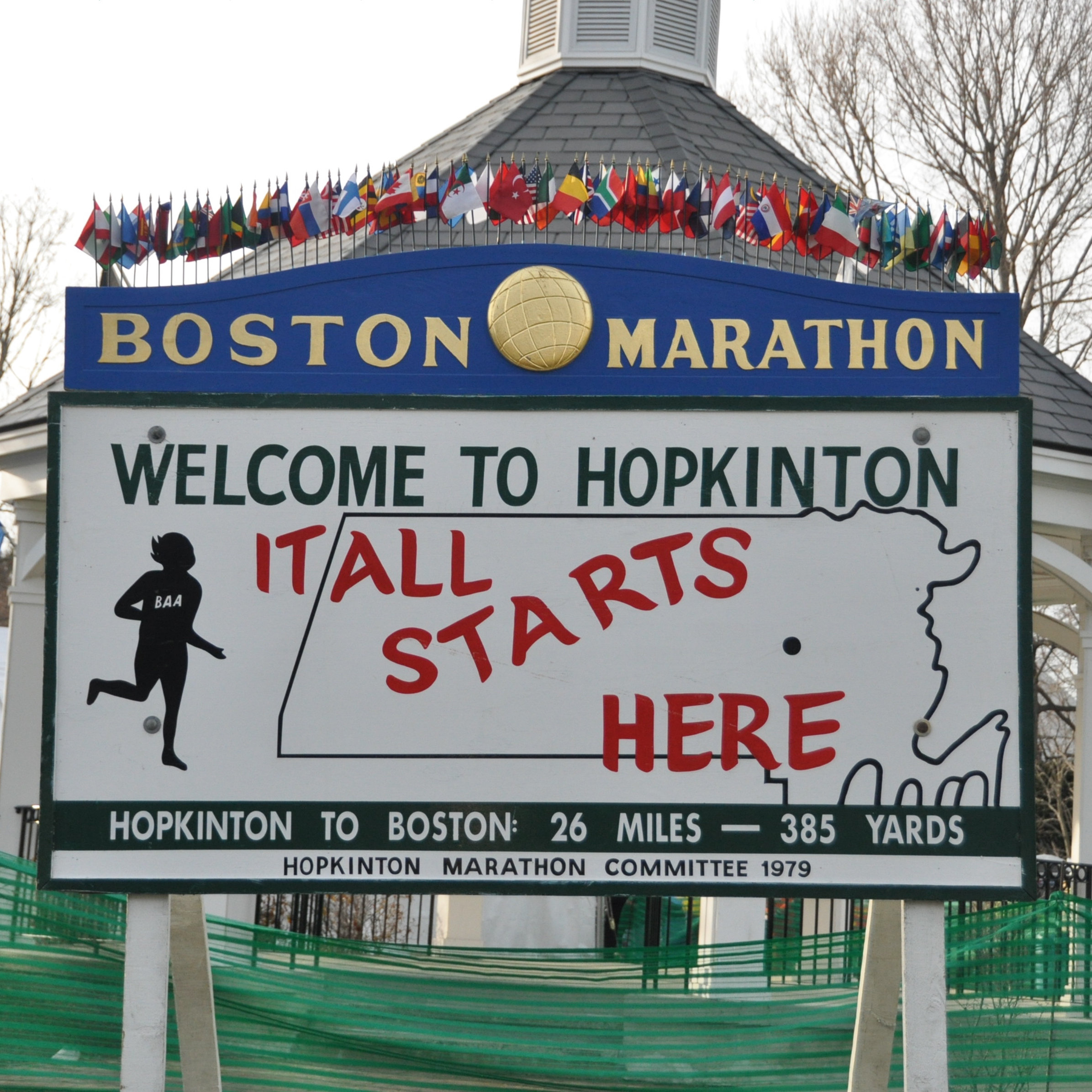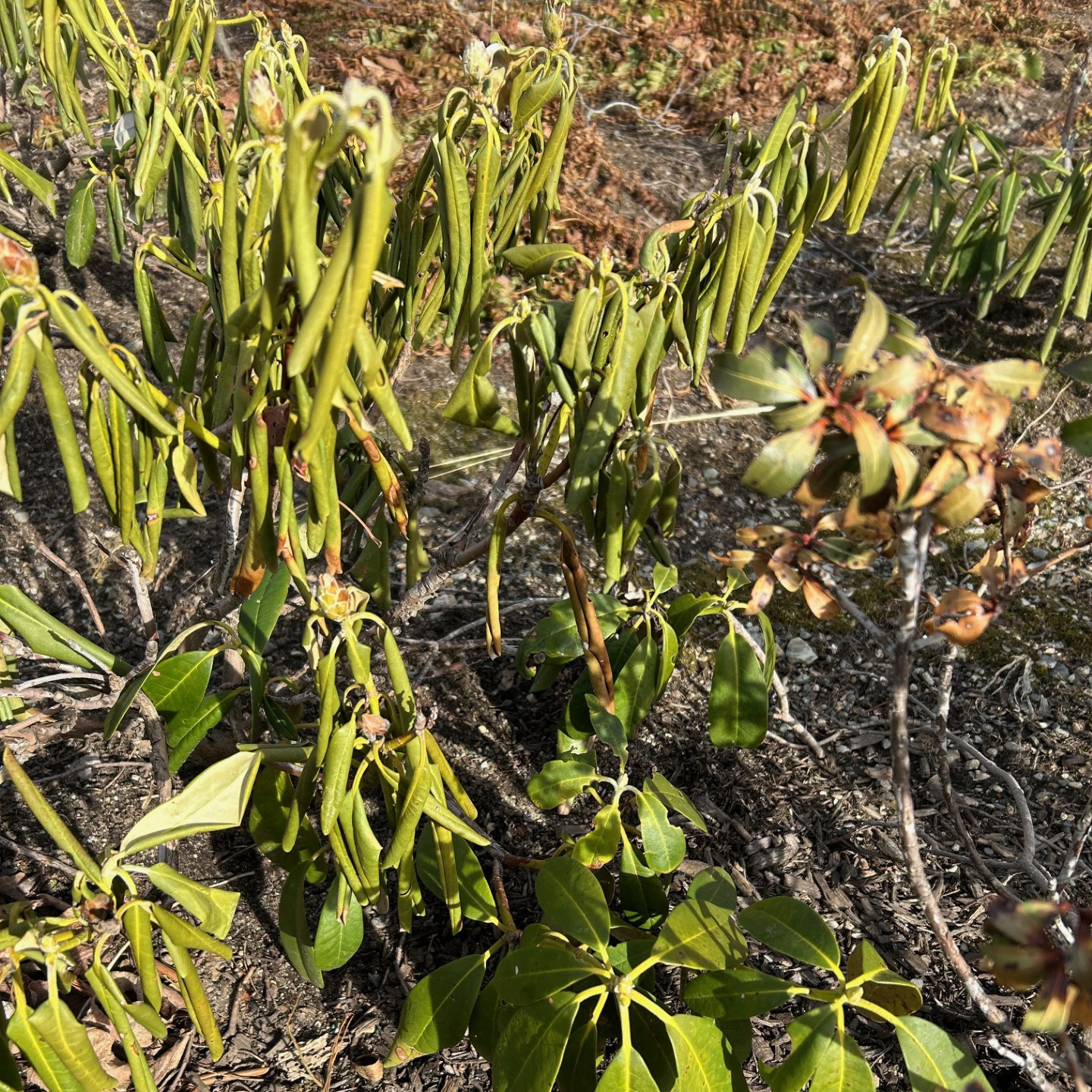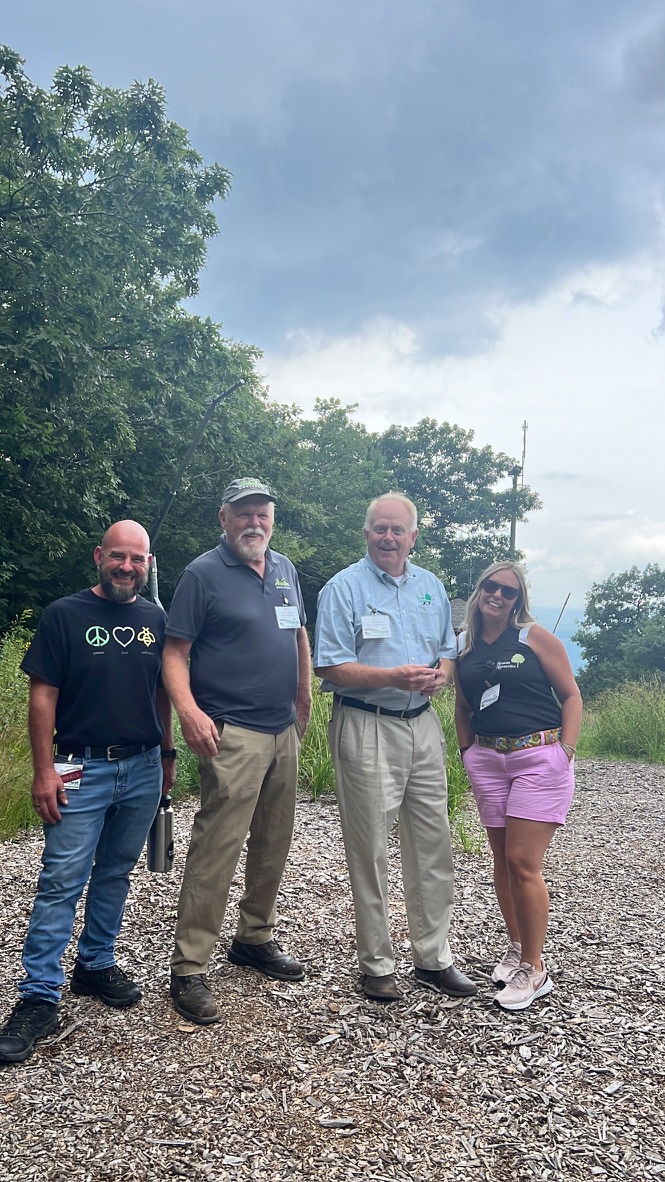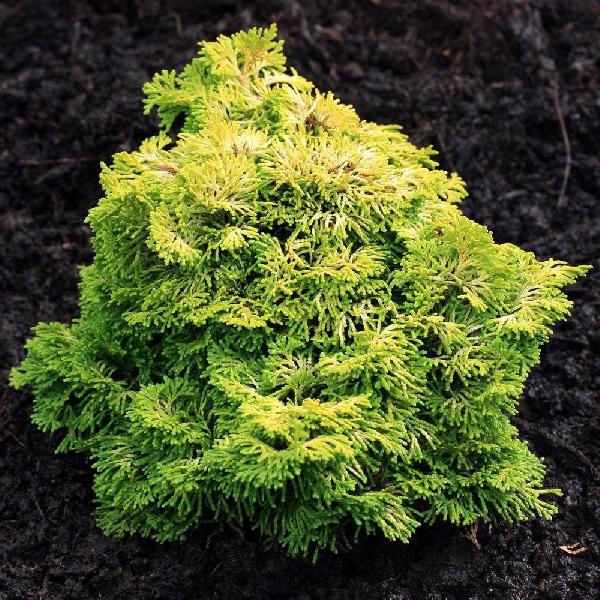
The name of this plant is certainly a mouthful! But fortunately, it is an incredibly easy plant to grow with no complications. That’s the idea behind the Cary Award, New England’s premier plant recognition program – foolproof trees and shrubs that look attractive all year. Winners of this Award are selected annually by New England’s top horticulturists, and this outstanding evergreen is one of the winners for 2013.
Golden Threadleaf Falsecypress (Chamaecyparis pisifera Filifera – the Gold-leaf Cultivars) is distinctive for its finely dissected foliage that’s vibrantly colored and attractive year-round. Its bright yellow color combines and contrasts well with other plants, especially effective against a dark background. And the unique “shaggy-dog” texture of its foliage adds interest growing near bold-leaf shrubs and trees like rhododendron, holly and magnolia.
Very few evergreens with yellow foliage are so reliable in New England’s climate. Using yellow tones in your landscape can provide some important benefits. If you live in a foggy region or experience lots of cloudy weather, the brightly colored foliage adds sparkle to the garden, mimicking the effect of sunlight. Combinations with darker-colored leaves like Rhododendron PJM or boxwood can be appealing to viewers. Especially in winter, that unexpected splash of brightness in the garden draws the eye and renews the recognition that spring will soon be here.
All the cultivars of this golden thread-leaf plant grow relatively slowly and require minimal maintenance. To enjoy the most brilliant color plant in full sun; normal garden soil is fine, and be sure to allow space for growth. Several cultivars including Dwarf Gold Thread and Golden Mop are readily available in garden centers. Left to grow naturally the plant reaches about 6 feet high and wide in 15 years, well within bounds for most landscape applications. If you want to limit its height or spread, don’t be afraid to prune – it is resilient, responding well to pruning, recovering quickly from being cut-back.
Even the most devoted gardeners can appreciate having attractive, reliable and easy to grow plants in our gardens, and the Cary Award winners are among the best. To learn more about the Cary Award winners, ask the experts at your local garden center or view the website: http://www.caryaward.com/: these are the plants that should be a part of every New England garden.
Wayne Mezitt is a 3rd generation nurseryman, a Massachusetts Certified Horticulturist, now chairman of Weston Nurseries of Hopkinton, Chelmsford & Hingham MA, and owner of “Hort-Sense”, a horticultural advisory business. He currently serves in various capacities on several horticulturally-related organizations, including the Massachusetts Horticultural Society at The Gardens at Elm Bank in Wellesley MA, and chairman for the Massachusetts Invasive Plant Advisory Group (MIPAG).[/vc_column_text][vc_empty_space][vc_column_text][/vc_column_text][/vc_column][/vc_row]


